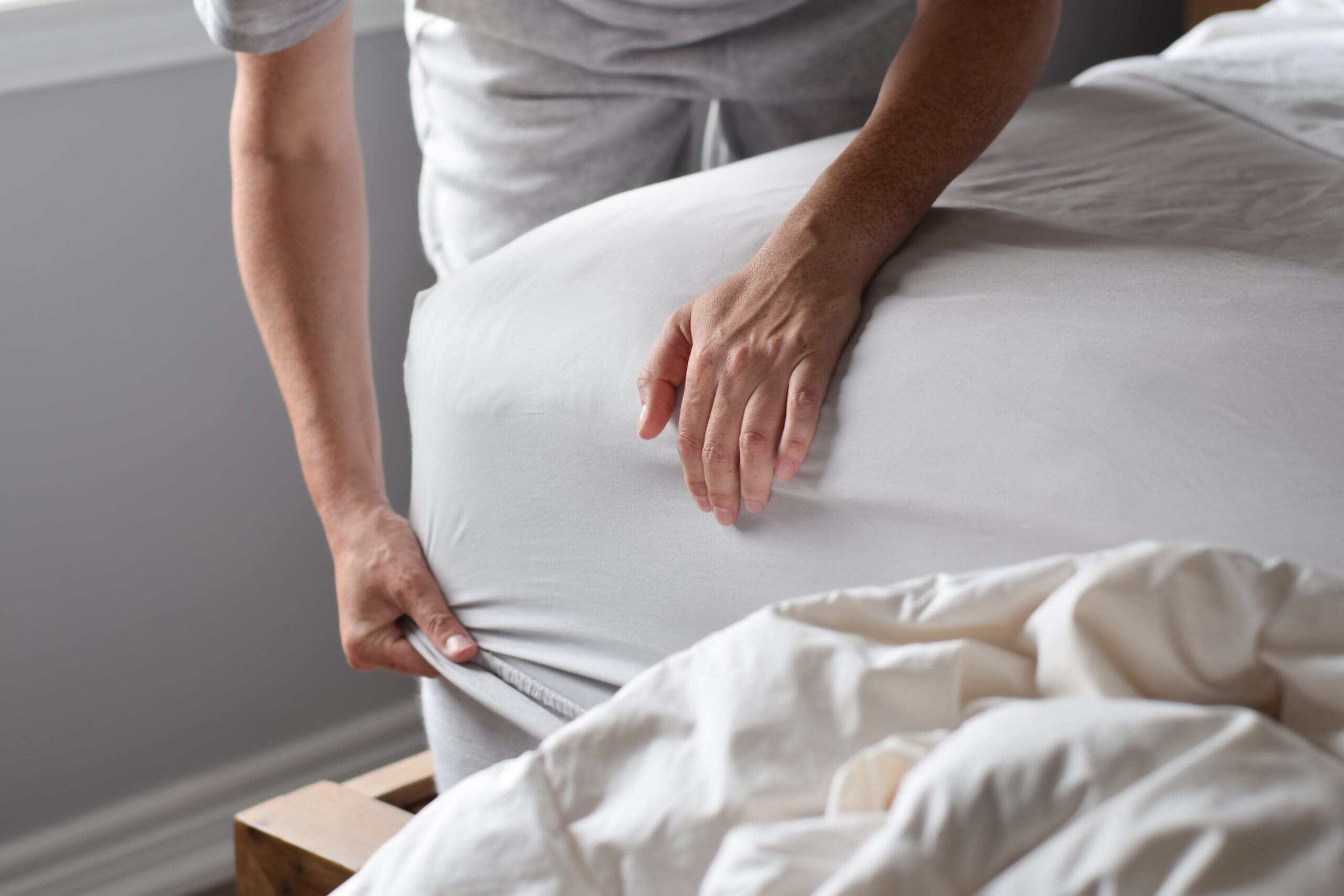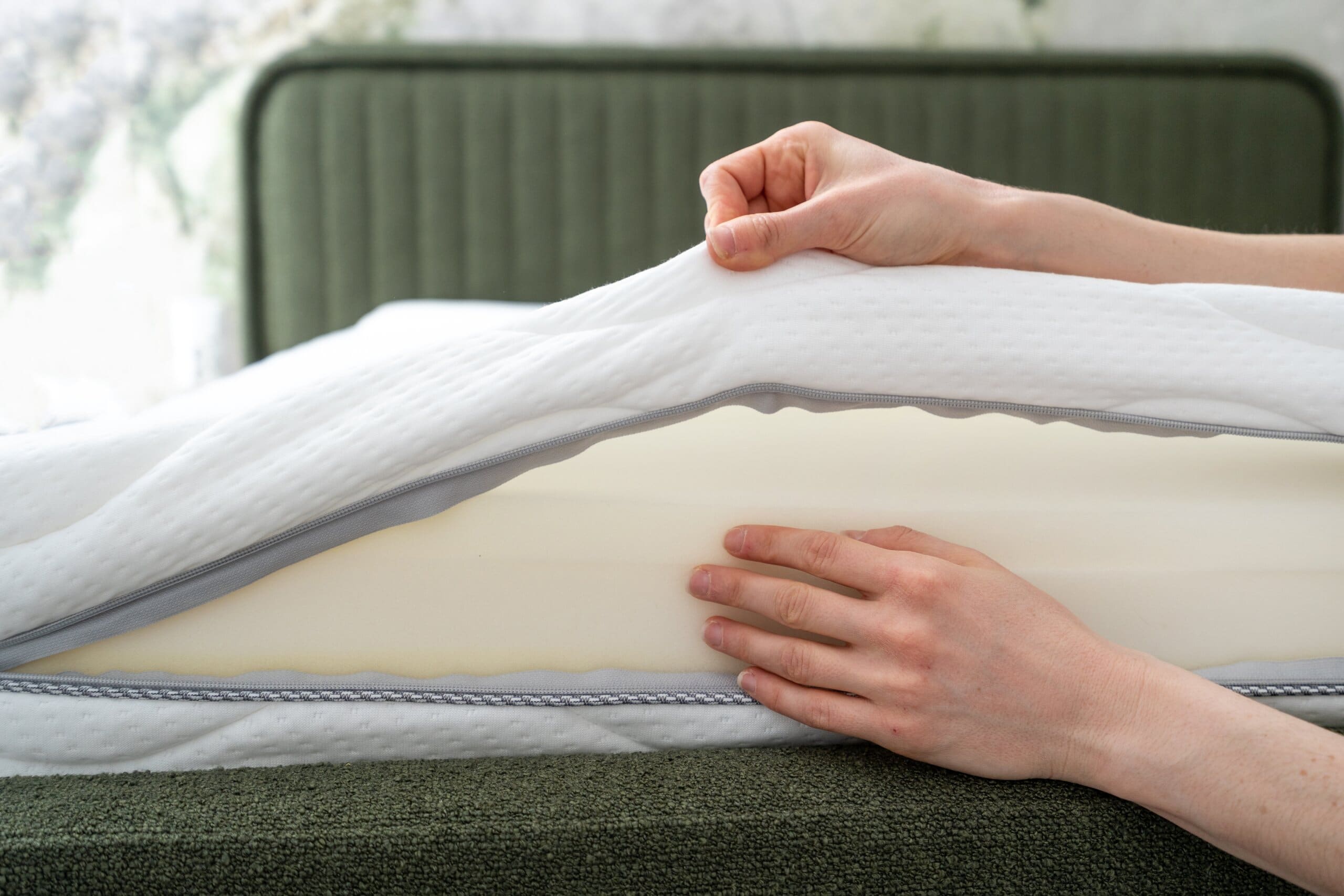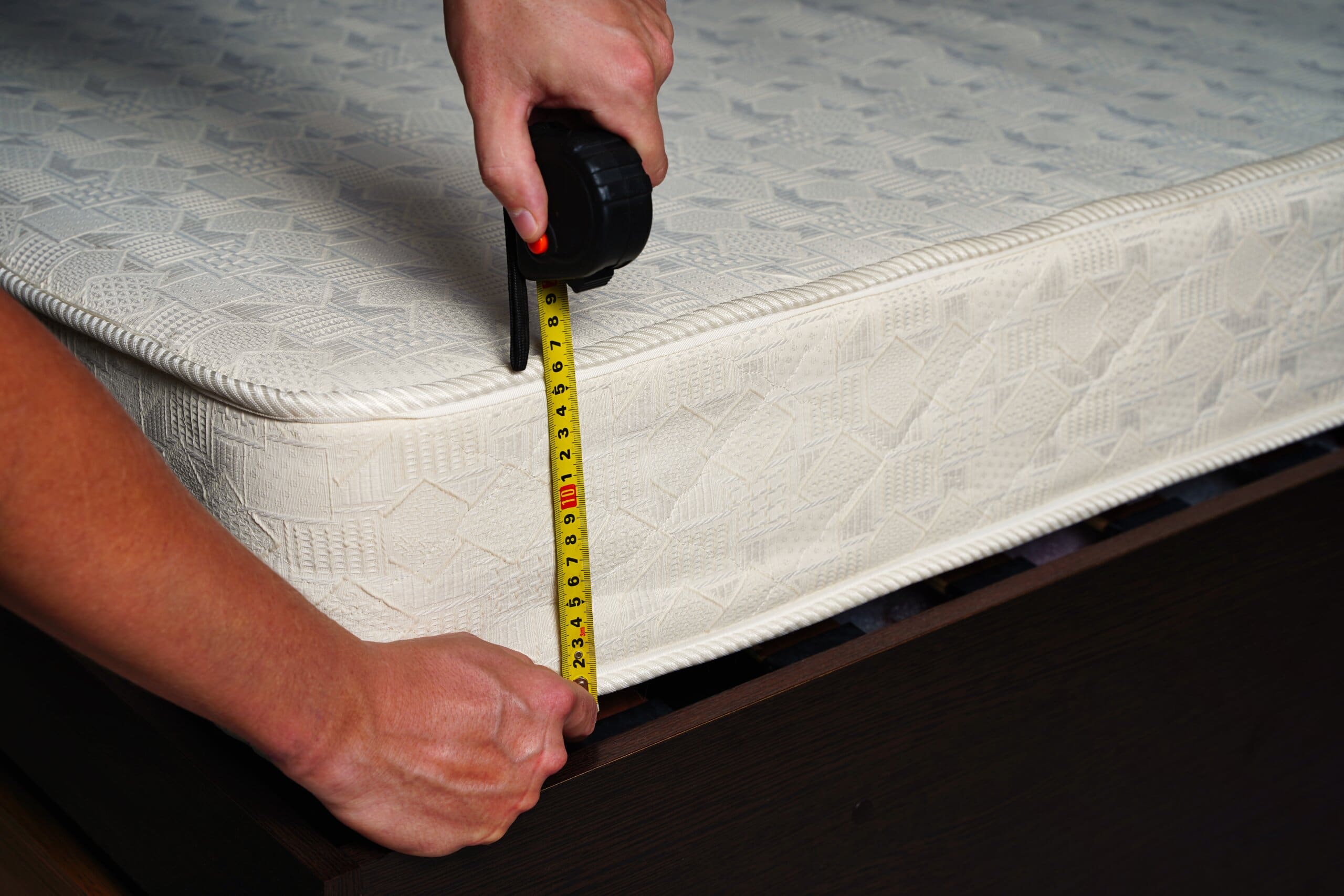Mattress Depth Buying Guide
Everything you should know about depth when choosing a new mattress.
Does mattress depth really matter? If you’re buying a new mattress, you’ll see the depth always mentioned. This is even though most people only bother about mattress depth if they’re buying for a bunk bed or specific type of bed frame.
Bed guides often miss out on this important factor. So to help you make the right choice, we’ve taken an in-depth look at how deep your mattress should be. Plus, we'll discuss whether the depth of a mattress really matters.
What is standard mattress depth?
The average height of a mattress can be between nine and twelve inches but is most commonly ten inches. Most sleepers will find this depth comfortable, and it is a particularly popular choice in king and queen mattresses because of its affordability. The material used in the mattress can make a big difference to what height you choose.
Memory foam styles tend to be on the higher end of the scale at around twelve inches. This is because they require more density to give proper back support. Whereas a pocket spring style tends to have less depth because the supporting springs take up much less space and only a thin layer of comfort filling is needed for padding.

How thick should a mattress be?
There is no hard and fast rule on how deep a mattress should be – it’s down to personal choice. Some people love the feeling of sinking into a deep mattress. Whereas others prefer a thinner mattress that offers just as much support and cushioning.
There's no direct correlation between mattress depth and firmness or support - if you want more information on tension and feel, read our Mattress Firmness Guide.
If you’re not sure which is right for you, start by measuring your existing mattress. If you feel comfortable on this one (but it’s come to the end of its natural life and needs replacing), then look for a mattress that’s comparable in depth.
You’ll find that these days, mattresses are measured in both metric and imperial. So make a note of the depth in centimetres and inches. This is just to make sure you’ve got the right numbers in front of you when you’re choosing your new mattress. Measure from the top of the mattress to the bottom - our Ultimate UK Bed & Mattress Size Guide will help you measure properly.
Why choose a deeper mattress?
Deeper mattresses were once seen as more the luxury, more comfortable option. But as time has gone on the structure and fillings of all styles have improved and each mattress depth serves a purpose. A thicker depth doesn’t guarantee comfort, however, there are several reasons to consider more mattress depth:
- The more depth a mattress has the more durable it tends to be. This is because the additional material used to construct them will take longer to wear down.
- Couples and those weighing 15 stone and up have been known to find more comfort in a thicker mattress. Thinner styles can only take so much weight before compressing the comfort layers down to the base. This can feel quite uncomfortable and give improper back support.
- Expecting mothers can also benefit from a thicker depth. During pregnancy, women tend to sleep on their side and extra comfort layers reduce the amount of pressure put on the joints. In the third trimester, mobility can be quite limited and the added height can make it easier to get in and out of bed.
Is it better to have a thicker mattress?
Not necessarily. Again, it’s all about your individual choice and what you prefer. Mattress depth doesn’t have any bearing on the comfort level of a modern mattress, regardless of the materials used to make it.
The only time that it may be better to have a thicker mattress is if you have a particularly low bed frame and need a little extra height to make it more comfortable getting on and off the bed. Remember if you have a thick mattress, you may need deep fitted sheets.
Why choose a thinner mattress?
Thinner depths also serve a purpose and thin doesn’t always mean uncomfortable. Sometimes people with limited mobility and those of shorter height find a thinner, lower style much easier to get in and out of bed. Similarly, people weighing 9 stone and under can benefit from thinner depth.
This is because it takes less weight for the mattress to compress which allows lighter people to get the full benefits from the structure. Mattresses are carefully designed to support the spine. If you are pressing into the mattress too much or too little, you won’t be getting the right back support you need.
Which mattress depth is right for me?
Average mattress depth (8-12 inches) - This tends to be the most affordable thickness. A few inches can make a big difference in this category depending on the materials used, such as memory foam. The lower end of the standard depth can feel on the thin side and won’t last as long as a thicker style. If comfort and durability are what you’re after, stick to the higher end of the average depth.
Deep mattress depth (12-20 inches) - Hybrid and foam styles tend to fall into this category. Entirely memory foam mattresses need to be deeper to give the spine the support it needs while remaining soft and comfortable. Hybrid styles are generally made up of pocket springs with a comfort layer of foam, making them taller than average. This style is ideal for people with a little bit more budget looking for some extra comfort.
Extra deep mattress depth (20 inches +) - Mattresses of this thickness are more of a thing of the past since they are heavy and can’t be compressed and rolled for transport. However, we do stock a range of extra thick mattresses for those who prefer a taller bed. Pillow top mattresses are great for adding extra height to your bed, with their layer of additional comfort fillings.

What to consider when deciding on a thicker mattress
There are several considerations when you’re buying a mattress. To make sure you get a comfortable night’s sleep every night, you need to think about not just the type of mattress you’re buying (foam or sprung), but your individual needs too.
Sleeping position
Are you a back, front or side sleeper? The position you choose to snooze in will determine what kind of mattress gives you the best and most comfortable levels of support. The consensus is that it’s best to sleep on your side to keep your spine in a neutral position.
Back and front sleepers can also achieve a good night’s sleep by picking the right mattress. For side sleepers, a medium firmness foam mattress will cushion and support you from your neck and shoulders down to your lower back. Back sleepers may benefit from an orthopaedic mattress with a pocket spring core for that additional support. While front sleepers will usually be more comfortable with a firmer mattress that stops their lower back from ‘arching’.
Your body type
If you’re a little on the heavy side then a thicker mattress may provide more support as it won’t compress as thinly as a slimmer mattress. If you’re light or you’re buying a mattress for a child, a thinner option may be more comfortable.
Sleeping alone or sharing the bed
Deeper mattresses (especially those with spring cores) tend to prevent that dreaded ‘roll together’ sensation that can ruin a good night’s sleep for both partners. They also disperse movement more effectively. So if you’re a restless sleeper a deeper mattress will ensure that there’s less movement transference. And, that your partner isn’t disturbed by your night-time wriggling.
If you suffer from back pain
The key thing to think about if you suffer from back pain isn’t really how deep your mattress is, but the level of support it offers. While some people may appreciate the firmness of an orthopaedic mattress, it isn’t necessarily the case that a firm mattress is the right choice for back pain. Sometimes a medium-firm option is better.
To find out more about finding the most comfortable mattress if you have a back problem, take a look at our guide to the Best Mattresses for Back Pain.
How to measure mattress depth:
If you’re unsure on what thickness to choose for your new mattress. Start by measuring your existing one. If it feels too thin, thick or just right, then you’ll have a great reference point to help you decide on your new depth. To measure, simply take a tape measure and measure from the top of the mattress to the base. Remember to measure in inches as this is the most popular unit of measurement when it comes to mattresses.

What is the best mattress topper thickness?
Adding extra depth to your mattress doesn’t necessarily mean you need a new one. Mattress toppers are an easy and affordable solution for adding extra thickness. However, keep in mind that adding a topper to an old, sagging mattress won’t fix the problem and will still lead to back pain. If your mattress has seen better days, it’s best to get a new one rather than adding extra padding.
Thick memory foam toppers
Toppers tend to be made of memory foam and can be anywhere from two to eight inches thick. Usually, you’ll be able to choose a density as well as thickness. The density is measured in pounds or kg per cubic feet - our Memory Foam Thickness and Density Guide will explain more. Usually, toppers range between two and six pounds per cubic feet. The density you choose will depend on how much you weigh, your sleeping preferences and how firm you want it to feel.
Three-inch memory foam toppers are the most popular choice and are perfect for people looking to soften their mattress. Foam toppers are particularly popular with those that prefer to sleep on their side. This is because sleeping on the side of the body can put a lot of pressure on the shoulder and hip. If the surface is too firm, it can lead to pain and disturbed sleep. Adding an extra layer of foam can make a huge difference in the overall comfort of the bed.
What is the maximum mattress depth for bunk beds?
Mattress thickness is especially important to take into account when buying for a bunk bed. If the mattress is too tall, it can make it easy for the child to roll off the top bunk and potentially fall out. Many retailers sell mattresses specifically designed for bunk beds but it’s still advised to check the measurements since all beds are made differently.
A bunk bed mattress should fit securely within the rails to avoid the mattress moving when sleeping or climbing down the ladder, so be sure to measure the height and width. When considering the depth, safety regulations state the bed rail should be at least 16 cm taller than the mattress.
The mattress itself should be no taller than 17 cm. Of course, these are the minimum guidelines and you should always use your best judgement. If the mattress seems too tall for the railings, choose a lower style.







